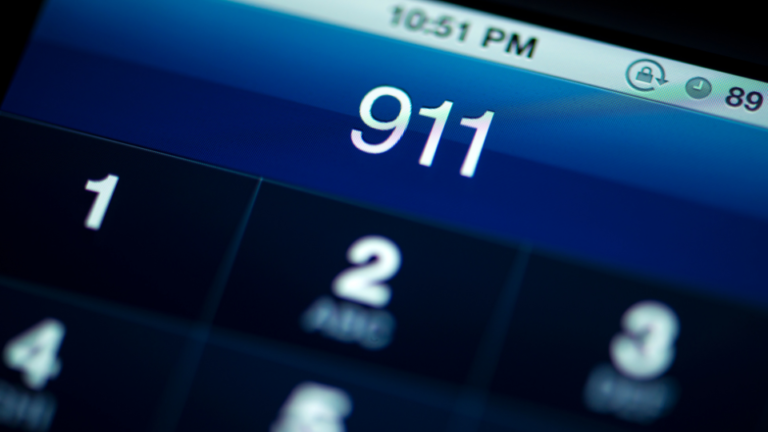In December 1992, a software designer named Neil Papworth sent the first Short Message/Messaging Service (SMS) message from his personal computer to his colleague’s mobile phone. Within a year, Nokia made SMS, more commonly known as text messaging, available on their network. The service continued to proliferate, and within the decade, most commercial networks had rolled out support for the service.
Twenty years later, in December 2012, an agreement between the four major cellular telephones companies, the National Emergency Number Association (NENA) and the Association of Public Safety Communication Officials (APSCO), was signed to make technology for text to 9-1-1 available on cellular networks throughout the U.S. no later than May 15, 2014. PSAP (Public Safety Answering Point) locations would also need to implement software and technology updates in their call centers to take advantage of text to 9-1-1. Those updates are still coming online. As a result of the agreement, texters nationwide will receive a quick bounceback message alerting them if they text 9-1-1 in an area that still needs to implement the service.
Most PSAPs today deal with text to 9-1-1 callers using software that receives the messages on a web browser. However, as the PSAP call centers upgrade their call-taking and dispatch software to the Next Generation 9-1-1 standard, more and more of the nation is gaining the ability to text 9-1-1. As a result, as of October 31, 2022, more than half of PSAP call centers around the U.S. have declared their readiness to accept text to 9-1-1 calls.
Next Generation 9-1-1 capable PSAP call centers also can receive text messages, video, and photographs directly from the user’s phone.
Pros and Cons of Text to 9-1-1
Location: While 9-1-1 and phone carriers have spent decades refining the location technology for voice calls, text messaging still lags far behind. Texts will be routed to 9-1-1 based on the cellular tower they are connected to, and this can sometimes lead to incorrect routing in edge areas. Mobile phones do not recognize geographic boundaries when connecting to a tower for the best signal, so State boundaries or, even more, simple county or jurisdictional boundaries are not considered. 9-1-1 operators may have to call the proper PSAP and act as an intermediary with the 9-1-1 texter to get their needed help.
Speed of response: Text messaging may lead to a longer response time due to various systematic factors involved in the process. A congested network at a concert or a rally could lead to the text taking longer than usual to reach the 9-1-1 call center. Congested networks can be challenging use cases for texting because the loud, large events are the ideal time to use a text-to-9-1-1 service since verbal communication might be hard to hear. However, if text messages take several minutes to send or replies don’t arrive, the service is almost moot. Similar situations may exist in scenarios where cell service is spotty.
Language: While PSAPs subscribe to services that make translations available for their voice calls, that doesn’t exist for text messaging. While it may be possible that the call center has someone on staff that can translate, it may also be the case that the call operator is trying to utilize publicly available translation software on the internet to communicate for an emergency where the details could be key. This also leads to a significant increase in response time as the translations are done.
Even though text to 9-1-1 does have its drawbacks, they are easily outweighed by the positive impact the service can have on 9-1-1 call reporting.
Texting information in situations where you can’t talk is an invaluable asset. Previous services, such as TTY relay services, had significant delays as people who could not verbally communicate or hear the operator needed to use these intermediary services to contact help. Now, the text capability allows them to receive support much faster. Other situations as well, such as loud venues or conditions where making oneself known by speaking is detrimental, are ideal reasons for providing the capability to text to 9-1-1. Crimes in progress also pose an opportunity for text to 9-1-1 to be an essential part of getting help to where it’s needed.
Important things to do (and not do) when texting 9-1-1
- Try a voice call if you are able. 9-1-1 operators will always prefer voice calls. In many jurisdictions, when you initially text 9-1-1, you will receive an automated reply asking you to call 9-1-1 on your phone if possible.
- Compose your first message to minimize first responder response time. 9-1-1 operators say that the first text should include as much information as possible. Include your exact address, city, county, and landmark if you can. Text to 9-1-1 doesn’t give accurate locations in the way a voice call will, so you will need to provide that data. The sooner in the text exchange, you do that, the better.
- Do not include other parties in your text message. Texts to 9-1-1 with another number as a group text will not go through.
- Do not use abbreviations. Without being able to hear for context, the operator will rely solely on what you type. While many abbreviations may be widely known, they change over time and may mean different things to different generations. U.K. Prime Minister David Cameron famously thought the “LOL” meant “Lots of love.”
- Watch out for auto-correct. Having the phone software autocorrect “Davis Ln” to “Davis Drive” may seem trivial, and similar hiccups happen daily with little consequence. In an emergency, however, Davis Lane may be on the other side of the city from Davis Drive and send first responders in the wrong direction.
- Be prepared to answer questions. Operators will have a list of questions they will ask you to respond to via text for more context about the situation. How many people are involved, how many injuries are there, etc., are just a few. Answer them as quickly as possible.
As texting continues to be the communication method of choice for many mobile device users today, PSAP call centers around the country are moving to take advantage of the updated technology that callers hold in their hands. Even so, 9-1-1 operators would prefer a voice call if possible. When a voice call is not possible, the text to 9-1-1 technology can provide an invaluable lifeline to those in need of assistance.





